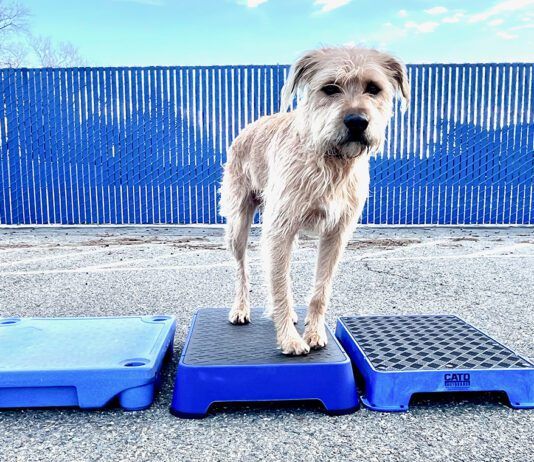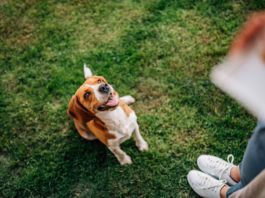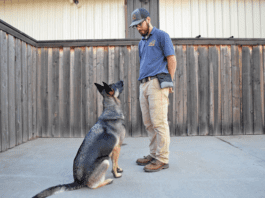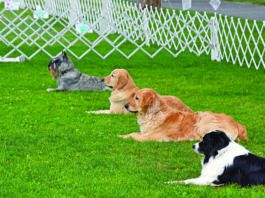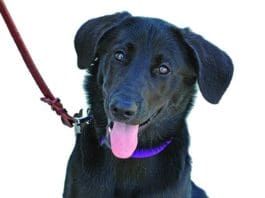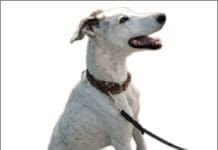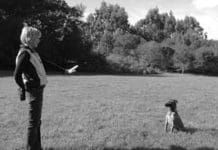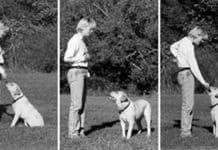Stay Happy
It’s 6 a.m., and barely beginning to get light outside. I trudge to the barn with Bonnie at my side to join my husband Paul, who has already started barn chores with the rest of the dogs. On the way, I stop to pick up empty feed pans from the horses, who have finished their morning grain. I cue Bonnie to sit, and stay, so my energetic dark-colored dog doesn’t disappear into the blackness. I enter the pasture, pick up the pans, and just as I move back toward the gate, I see Bonnie’s ears prick and eyes light up in excited anticipation as she looks to my left.
Training the Dog to Stay
Recently, I was struck by the realization that while "Wait!" is one of the most valuable cues I use with my dogs, it's a behavior we didn't usually teach in old-fashioned choke-chain obedience classes. Oh, we taught rock-solid obedience ring "Stays." Some trainers substituted the word "wait" for "stay" to differentiate between recalls ("wait" means you're going to get up and come to me when I call you) and the one-minute and three-minute sit-and-down-stays (stay means you are never to move no matter what happens until I come back to release you). Generally, though, we didn't use "Wait" to mean "pause" as many of us dog owners do today. "Wait" is a valuable cue; I'd be lost without it. Of course, a cue takes on whatever meaning you give to it when you teach your dog a new word or hand signal. We tend to use words that are meaningful to us (they are much easier to remember!) but if you wanted, you could teach your dog that "Banana!" means sit, "Orange" means down, "Pumpkin" means stay, and "Kiwi" means wait. As long as you teach your dog what behavior you want him to associate with your words and use them consistently, your dog will learn the meaning you've assigned to them and the cues will work for you.
Increase Your Dog’s Reliability
Behavior professionals often define “reliable” as responding appropriately to the cue at least 80 percent of the time. That means your dog sits at least 8 out of 10 times when you ask him to. It’s unreasonable to expect 100 percent reliability from your dog. It takes commitment to your training program to achieve reliability under a wide variety of conditions. Let’s explore some of the elements that make for true reliability.
Training a Dependable “Stay”
How to produce a completely dependable "stay" in your dog, no matter what the distraction. (Hint: It takes a lot of practice!) We were on our usual morning neighborhood walk. All of a sudden, three children on bikes sped past us on the sidewalk, racing each other on the way to school. The faster and older children raced around the corner, leaving the younger bicyclist in their dust.
Runaway Dog: Preventing Your Dog From Escaping
How to safely confine burrowers, bounders, beavers, and bolters. Otis the Bloodhound was an opportunistic escapee. I discovered his talent one day while working at the front desk at the Marin Humane Society, early in my animal protection career. A woman came in asking if we might know where a Bloodhound lived, because he kept visiting her house every day. He was charming, she said, but she worried that he might get hit by a car.
Sit Happens
and Wow! Sandy says


